-
 Bitcoin
Bitcoin $108,262.4325
-1.40% -
 Ethereum
Ethereum $2,518.2882
-2.94% -
 Tether USDt
Tether USDt $1.0003
-0.01% -
 XRP
XRP $2.2262
-1.71% -
 BNB
BNB $653.9254
-1.55% -
 Solana
Solana $148.1036
-3.11% -
 USDC
USDC $1.0000
0.01% -
 TRON
TRON $0.2829
-1.45% -
 Dogecoin
Dogecoin $0.1639
-4.82% -
 Cardano
Cardano $0.5742
-4.43% -
 Hyperliquid
Hyperliquid $38.9506
-3.95% -
 Sui
Sui $2.9040
-4.34% -
 Bitcoin Cash
Bitcoin Cash $484.8307
-2.62% -
 Chainlink
Chainlink $13.1971
-3.73% -
 UNUS SED LEO
UNUS SED LEO $9.0822
0.51% -
 Avalanche
Avalanche $17.8613
-4.01% -
 Stellar
Stellar $0.2385
-2.26% -
 Toncoin
Toncoin $2.7570
-3.88% -
 Shiba Inu
Shiba Inu $0.0...01145
-3.99% -
 Litecoin
Litecoin $86.9999
-2.43% -
 Hedera
Hedera $0.1538
-3.90% -
 Monero
Monero $313.7554
-2.03% -
 Polkadot
Polkadot $3.3681
-5.08% -
 Dai
Dai $1.0000
0.00% -
 Ethena USDe
Ethena USDe $1.0001
-0.01% -
 Bitget Token
Bitget Token $4.4401
-2.97% -
 Uniswap
Uniswap $6.9644
-8.41% -
 Pepe
Pepe $0.0...09666
-4.79% -
 Aave
Aave $266.5686
-5.04% -
 Pi
Pi $0.4713
-4.95%
Is it worth holding Flare(FLR) for a long time? What risk factors should be paid attention to?
Flare (FLR) enhances blockchain interoperability, offering long-term value through dApp development and governance participation, but investors should consider market volatility and competition risks.
May 01, 2025 at 08:14 am
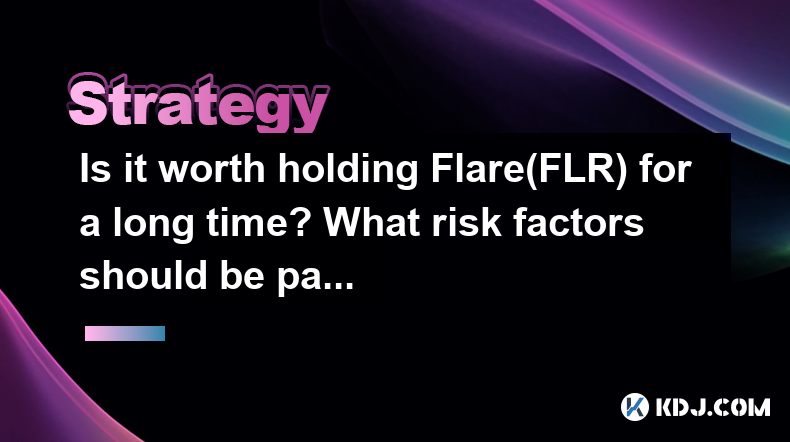
Introduction to Flare (FLR)
Flare (FLR) is a blockchain platform designed to enhance the interoperability between different blockchains and facilitate the creation of decentralized applications (dApps). Launched in 2020, Flare aims to provide developers with the tools needed to build applications that can access data from various blockchains and external sources. This unique approach makes Flare an interesting project within the cryptocurrency space, but potential investors often wonder whether holding FLR for the long term is a wise decision and what risk factors should be considered.
The Value Proposition of Flare (FLR)
Flare's primary value proposition lies in its ability to connect disparate blockchain ecosystems. By providing a decentralized data acquisition layer, Flare allows dApps to access and utilize data from multiple blockchains. This capability can significantly enhance the functionality and utility of dApps, potentially increasing their adoption and, in turn, the demand for FLR.
Additionally, Flare's State Connector and Flare Time Series Oracle (FTSO) are key components that enable the platform to fetch and validate data from external sources. These features are crucial for developers who need reliable, decentralized data feeds for their applications. The potential for Flare to become a critical infrastructure in the blockchain space could drive long-term value for FLR holders.
Potential Long-Term Benefits of Holding FLR
Holding FLR for the long term could be beneficial for several reasons. Firstly, as Flare continues to develop and expand its ecosystem, the demand for FLR might increase. This growth could lead to an appreciation in the value of FLR, providing potential returns for long-term holders.
Secondly, FLR holders are eligible to participate in Flare's governance model. By staking FLR, users can vote on proposals that affect the network's development and direction. This governance participation not only gives holders a say in the platform's future but also incentivizes them to hold FLR for the long term.
Furthermore, Flare's ecosystem includes several incentivization programs such as the FlareDrop, where holders of certain cryptocurrencies receive FLR tokens. These programs can provide additional value to FLR holders and encourage long-term investment in the token.
Risk Factors to Consider When Holding FLR
While the potential benefits of holding FLR are compelling, there are several risk factors that investors should consider. Firstly, market volatility is a significant risk in the cryptocurrency space. The price of FLR, like other cryptocurrencies, can fluctuate dramatically, leading to potential losses for investors.
Secondly, regulatory risks are a concern for any cryptocurrency project. Changes in regulations could impact Flare's operations and the value of FLR. Investors should stay informed about regulatory developments that could affect the project.
Another risk factor is competition within the blockchain interoperability space. Flare faces competition from other projects like Polkadot and Cosmos, which also aim to enhance blockchain interoperability. If these competitors gain more traction, it could negatively impact Flare's growth and the value of FLR.
Additionally, technological risks are inherent in any blockchain project. Flare's success depends on the continued development and adoption of its technology. Any technical issues or delays in development could hinder the project's progress and affect the value of FLR.
Assessing the Technical Viability of Flare
The technical viability of Flare is a critical factor in determining whether it is worth holding FLR for the long term. Flare's use of the Avalanche consensus protocol ensures high scalability and security, which are essential for its data acquisition layer. The platform's ability to handle large amounts of data from various sources is a testament to its technical capabilities.
Moreover, Flare's development team consists of experienced blockchain developers and engineers who have a track record of delivering on their promises. The team's commitment to continuous improvement and innovation bodes well for the platform's future.
However, potential investors should monitor the progress of Flare's development milestones. Delays or setbacks in the rollout of new features or updates could impact the platform's adoption and the value of FLR. Regular updates from the Flare team and community engagement are essential indicators of the project's health.
Community and Ecosystem Growth
The growth of Flare's community and ecosystem is another important factor to consider when deciding whether to hold FLR for the long term. A strong and active community can drive the adoption of Flare's technology and increase the demand for FLR.
Flare's ecosystem has been expanding with the introduction of various dApps and projects that leverage its data acquisition capabilities. The more applications built on Flare, the more utility FLR gains, potentially leading to a higher valuation.
Additionally, partnerships and collaborations with other blockchain projects and enterprises can enhance Flare's reach and influence. Investors should keep an eye on Flare's partnerships as they can provide insights into the project's growth trajectory.
Conclusion on Holding FLR Long-Term
Deciding whether to hold FLR for the long term involves weighing the potential benefits against the associated risks. The value proposition of Flare, its technical viability, and the growth of its ecosystem all contribute to its potential as a long-term investment. However, market volatility, regulatory risks, competition, and technological challenges are significant factors that investors must consider.
Frequently Asked Questions
Q: How can I participate in Flare's governance?
A: To participate in Flare's governance, you need to stake your FLR tokens. Here are the steps to do so:
- Download a compatible wallet that supports FLR staking, such as the Flare Wallet or a compatible third-party wallet.
- Transfer your FLR tokens to the wallet.
- Navigate to the staking section within the wallet and follow the instructions to stake your FLR.
- Vote on proposals using the governance interface provided by the wallet.
Q: What are the key features of Flare's State Connector and FTSO?
A: Flare's State Connector is a decentralized data acquisition layer that allows dApps to access and validate data from various blockchains and external sources. It ensures the data's integrity and reliability, which is crucial for the functionality of dApps.
The Flare Time Series Oracle (FTSO) provides decentralized price and data feeds to the Flare network. It aggregates data from multiple sources and uses a voting mechanism to determine the most accurate data, ensuring that dApps have access to reliable information.
Q: How does Flare's incentivization program work?
A: Flare's incentivization program includes initiatives like the FlareDrop, where holders of certain cryptocurrencies receive FLR tokens. Here's how it works:
- Eligible cryptocurrencies are announced by the Flare team.
- Holders of these cryptocurrencies at a specific snapshot date receive FLR tokens.
- The distribution of FLR is typically done over a period to encourage long-term holding and participation in the Flare ecosystem.
Q: What are some of the dApps currently built on Flare?
A: Several dApps have been developed on Flare, leveraging its data acquisition capabilities. Some notable examples include:
- Songbird (SGB): A canary network for Flare, allowing developers to test and refine their applications before deploying them on the main Flare network.
- Flare Finance: A decentralized finance (DeFi) platform that utilizes Flare's data feeds to provide lending, borrowing, and other financial services.
- Flare Oracle: A dApp that provides decentralized data feeds to other applications, enhancing their functionality and reliability.
Disclaimer:info@kdj.com
The information provided is not trading advice. kdj.com does not assume any responsibility for any investments made based on the information provided in this article. Cryptocurrencies are highly volatile and it is highly recommended that you invest with caution after thorough research!
If you believe that the content used on this website infringes your copyright, please contact us immediately (info@kdj.com) and we will delete it promptly.
- Bitcoin's Pattern Break: Are HODLers the Key to the Next Surge?
- 2025-07-04 18:50:12
- Bitcoin Price, Trump's Bill, and the $150K Dream: A NYC Take
- 2025-07-04 19:50:12
- Ethereum, LILPEPE, and the July Bounce: Will Pepe Steal ETH's Thunder?
- 2025-07-04 19:10:12
- Binance Institutional Loans: Unlocking 4x Leverage and Zero Interest for Whales
- 2025-07-04 19:15:12
- Bitcoin Bull Run: Analysts Eye Peak in Late 2025?
- 2025-07-04 19:20:13
- Pepe Indicators, Bullish Forecast: Can the Meme Coin Rally?
- 2025-07-04 19:25:12
Related knowledge
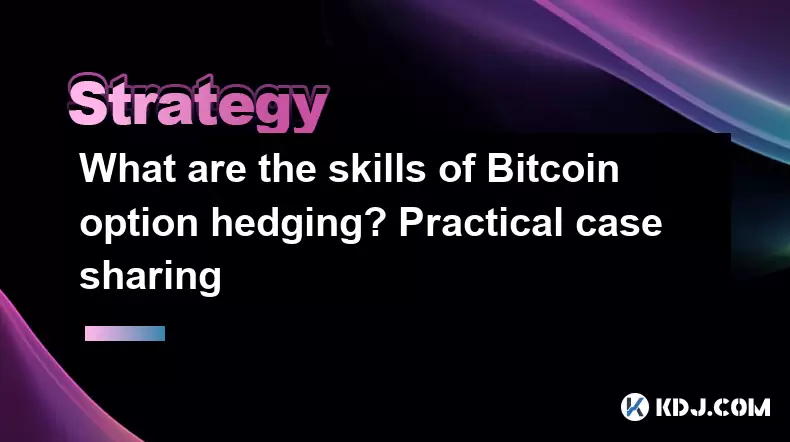
What are the skills of Bitcoin option hedging? Practical case sharing
Jun 24,2025 at 04:01pm
Understanding Bitcoin Option HedgingBitcoin option hedging is a risk management strategy used by traders and investors to protect their positions in the volatile cryptocurrency market. By using options, individuals can limit potential losses while retaining the opportunity for profit. In essence, it allows one to insulate against adverse price movements...
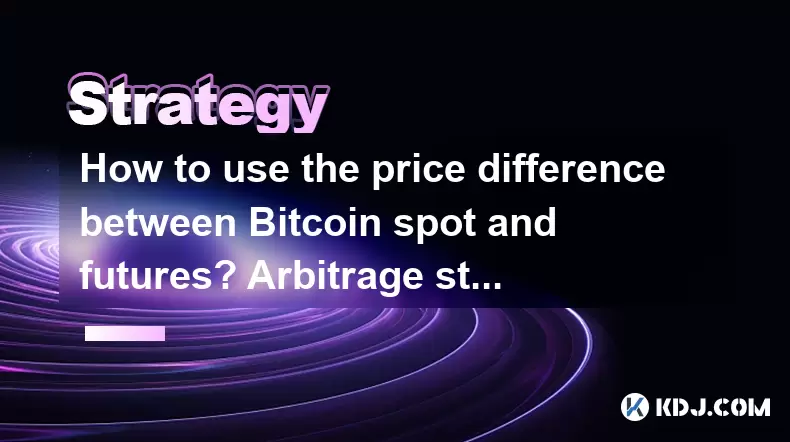
How to use the price difference between Bitcoin spot and futures? Arbitrage strategy
Jun 20,2025 at 02:56pm
Understanding Bitcoin Spot and Futures MarketsTo effectively leverage arbitrage opportunities between Bitcoin spot and futures markets, it's essential to understand the fundamental differences between these two types of markets. The spot market refers to the direct buying and selling of Bitcoin for immediate delivery at the current market price. In cont...

How to increase DeFi lending income? Strategy and risk analysis
Jun 24,2025 at 02:08pm
Understanding DeFi Lending and Its Income PotentialDeFi (Decentralized Finance) lending has emerged as a popular way to earn passive income in the cryptocurrency space. Unlike traditional banking systems, DeFi lending platforms allow users to lend their crypto assets directly to borrowers without intermediaries. The lenders earn interest based on the su...
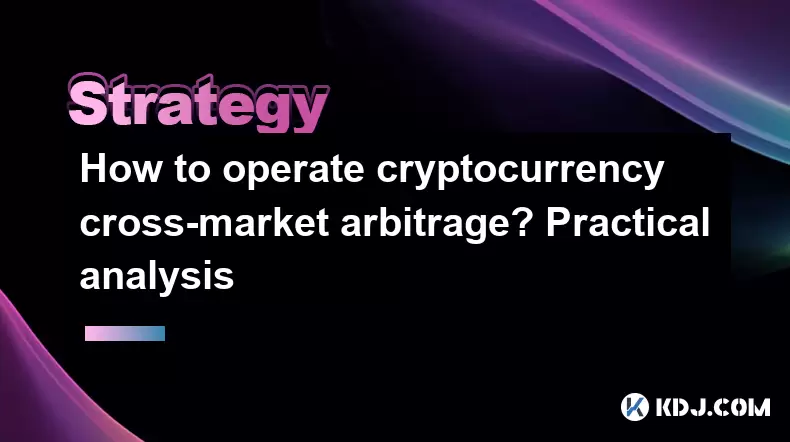
How to operate cryptocurrency cross-market arbitrage? Practical analysis
Jun 23,2025 at 04:01am
Understanding Cryptocurrency Cross-Market ArbitrageCryptocurrency cross-market arbitrage involves taking advantage of price differences for the same digital asset across different exchanges. The core idea is to buy low on one exchange and sell high on another, capturing the profit from the discrepancy. This strategy relies heavily on real-time market da...

How to make profits from high-frequency cryptocurrency trading? Sharing core skills
Jun 19,2025 at 05:07pm
Understanding High-Frequency Cryptocurrency TradingHigh-frequency trading (HFT) in the cryptocurrency market involves executing a large number of trades at extremely fast speeds, often within milliseconds. This method relies on small price discrepancies across exchanges or within a single exchange’s order book. Traders use complex algorithms and ultra-l...
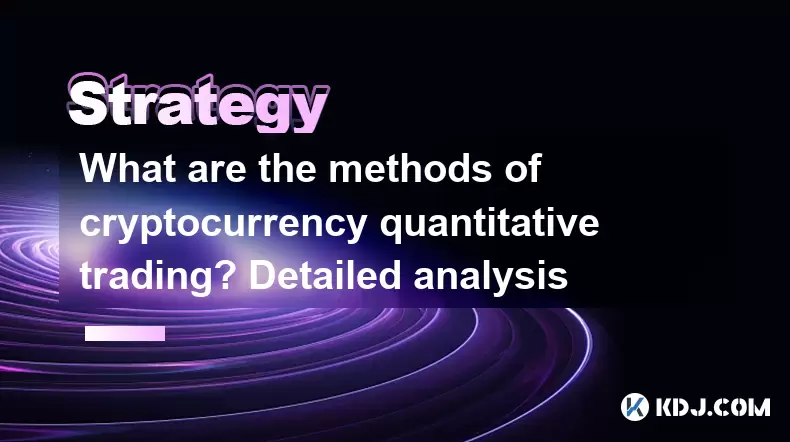
What are the methods of cryptocurrency quantitative trading? Detailed analysis
Jun 22,2025 at 11:07pm
Understanding the Core of Cryptocurrency Quantitative TradingCryptocurrency quantitative trading refers to the use of mathematical models and algorithms to execute trades in the digital asset market. Unlike traditional discretionary trading, which relies heavily on human judgment, quantitative trading leverages data-driven strategies to identify profita...

What are the skills of Bitcoin option hedging? Practical case sharing
Jun 24,2025 at 04:01pm
Understanding Bitcoin Option HedgingBitcoin option hedging is a risk management strategy used by traders and investors to protect their positions in the volatile cryptocurrency market. By using options, individuals can limit potential losses while retaining the opportunity for profit. In essence, it allows one to insulate against adverse price movements...

How to use the price difference between Bitcoin spot and futures? Arbitrage strategy
Jun 20,2025 at 02:56pm
Understanding Bitcoin Spot and Futures MarketsTo effectively leverage arbitrage opportunities between Bitcoin spot and futures markets, it's essential to understand the fundamental differences between these two types of markets. The spot market refers to the direct buying and selling of Bitcoin for immediate delivery at the current market price. In cont...

How to increase DeFi lending income? Strategy and risk analysis
Jun 24,2025 at 02:08pm
Understanding DeFi Lending and Its Income PotentialDeFi (Decentralized Finance) lending has emerged as a popular way to earn passive income in the cryptocurrency space. Unlike traditional banking systems, DeFi lending platforms allow users to lend their crypto assets directly to borrowers without intermediaries. The lenders earn interest based on the su...

How to operate cryptocurrency cross-market arbitrage? Practical analysis
Jun 23,2025 at 04:01am
Understanding Cryptocurrency Cross-Market ArbitrageCryptocurrency cross-market arbitrage involves taking advantage of price differences for the same digital asset across different exchanges. The core idea is to buy low on one exchange and sell high on another, capturing the profit from the discrepancy. This strategy relies heavily on real-time market da...

How to make profits from high-frequency cryptocurrency trading? Sharing core skills
Jun 19,2025 at 05:07pm
Understanding High-Frequency Cryptocurrency TradingHigh-frequency trading (HFT) in the cryptocurrency market involves executing a large number of trades at extremely fast speeds, often within milliseconds. This method relies on small price discrepancies across exchanges or within a single exchange’s order book. Traders use complex algorithms and ultra-l...

What are the methods of cryptocurrency quantitative trading? Detailed analysis
Jun 22,2025 at 11:07pm
Understanding the Core of Cryptocurrency Quantitative TradingCryptocurrency quantitative trading refers to the use of mathematical models and algorithms to execute trades in the digital asset market. Unlike traditional discretionary trading, which relies heavily on human judgment, quantitative trading leverages data-driven strategies to identify profita...
See all articles

























































































